
Narrative Design
Le Beau Tambour
Le Beau Tambour is a text-based narrative game whose mechanics rely on the player's attention to what is happening, emotions and music. While following the adventures of Grenouille, the player meets characters as crazy as they are endearing and tries to solve their problems with the blow of a drum stick! The player must pay attention to the reactions of his musicians to choose the right melody to play, which will accentuate a particular emotion. This emotion will then dictate what answer the musician replies during the dialogue with the character blocking their path. The player thus changes the relationships of his characters and their feelings.
The first job as a Narrative designer was to define the narrative system that would drive the experience. In collaboration with the programmers, we arrived at a branching system of choice linked to the chosen emotions.

Defines the dialogue that will run
Choice of musician
Choice of the story arc in which we will evolve.

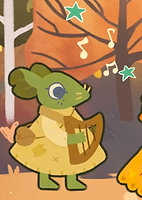
Choice of emotion
Choose an emotion according to the clues present in the dialogues and the behavior of the musician.


IF the emotion is compatible:
The following dialogue advances the musician's story.
IF the emotion is NOT compatible:
The following dialogue brings new clues to compatible emotions, but does not advance the story, the player must try again.
This dialogue choice system involves the creation of dialogue trees leading to different frames. These trees were created in several steps: creation of the basic tale (material), creation of the dialogue tree and narrative arcs, and finally integration into a Google Sheet linked to the Unity project.

Writing the chapter story

Dialogue tree, different evolution of the musicians depending on the player's choices

Integration of dialogues in the Google Sheet with tags and identifiers.
Once the dialogues are written, it is then necessary to take care of the emotional tags created by the programmers and to test the coherence of the narration with the various possible sequences of dialogues. The game's emotional cues are instantiated directly through the Google Sheet, so emotional management was also part of my responsibilities.

Dialogs once the step of adding tags is complete.

"Your honey in exchanges for my family's most precious possession! Where's the cheat <? E: React / Trust, Mouse, TRUE />?"
<? E: ReactionType / Emotion, TargetCharacter, Stop textDuringReation />
The mouse produces Confidence Vfx. The text stops for the duration of the VFX.
Thanks to all these tools, it was possible for me as an author to create different evolutions of each character according to the emotions that the player chooses to play. The mouse facing the cat can therefore end up frightened or compassionate. Its story arc will evolve and define a character trait for the rest of the adventure.

Compassionate
Scared
Haughty
Friendly
Terrorized
Hateful
Dialogue instantiated according to the attribute given in the previous chapter according to the player's old choices.
Attribute given for the next chapters according to the player's last choices.
Writing
The project already having its intentions established, I had to adapt to it to write a story coherent with the wanted mood. A first kind reference research work had to be done.
Intentions of the game:
Chillness / children's story / light and close.
An analysis of works follows to define the key elements of this kind of story.
Children's albums:
Simplicity
Friendship theme
Font and color games
Lightness and originality
Short format
More mature underlying topic















Main references:
-
L'agneau qui ne voulait pas être un mouton
-
Me pardonneras-tu ?
-
Lune et Soleil
-
Pour toujours et à jamais
-
Le renard et le coq
-
Le rêve du renard
-
Le Loup vert
-
Le plus heureux des ours
-
Novembre au Printemps
-
Le mouton en habit de loup
-
Je veux être comme toi
-
Ma nouvelle maison
-
La magnifique crinière de Monty
-
Le loup qui voulait changer de couleur
-
Pob le petit ours Bleu
-
Comme 1 maman
-
La glace brisée
-
Le Ballon d'Alexandre
-
Le poème de Nina
-
Même pas peur
-
Iris et Isaac
-
L'Ogresse en Pleurs
-
La course aux étoiles
-
Petite Poule et Petit Canard
-
Les musiciens
-
La carpe et l'Ours
-
Le chien bleu
-
Les yeux noirs
-
L'arbre à Histoires
-
Oh non Geoffrey !
-
Ernest et Celestine
-
Comment le chameau eut sa bosse
-
Casse-noisette
-
Les crocodiles
-
Frère lapin
-
Les meilleurs amis du monde
-
La folle course de Maman Poulesse mais ils
-
La rivière
-
Les corbeaux de Pearblossom
-
La maison de moufette
-
L'Afrique de Zigomar
-
Le Chat Botté
-
Poucette
-
Blanche Neige
-
Cendrillon
-
Belle au Bois Dormant
-
Belle et la Bête
-
Jacques et le Haricot magique
-
Doux comme des Agneaux
-
Mon chien est un éléphant
-
Lapin de Pâque
-
L'oeuf du coq
-
Opération coccinelle
-
La toison du mouton
-
Castor fainéant
-
Sale menteur !
-
La Rhino est une féroce
-
Ourson trop petit
-
Une amitié Difficile




Main references:
-
Le lièvre et la tortue
-
La cigale et la fourmie
-
Le Corbeau et le renard
-
Le cerf se voyant dans l'eau
-
Le loup et le chien
-
Le cochet, le chat et le souriceau
-
Le lièvre et les grenouilles
-
La chauve-souris et les deux belettes
-
Le rat de ville et le rat des champs
-
La grenouille qui veut se faire plus grosse que le boeuf
-
La tortue et les deux canards
-
Le renard et le bouc
-
Le lièvre et la tortue
-
Le loup et l'agneau
Pressed Stories (Bernard Friot)
Theme originality
Originality of structure
Lightness
.jpg)
Main references:
-
Attendons la suite...
-
Les histoires ne sont plus ce qu'elles étaient
-
Nicolas et saint Nicolas
-
La sorcière amoureuse
-
Les histoires se terminent toujours de la même façon

Fables de La Fontaine :
Themes
Reading levels
Personifications
Melody of text and words
Morals
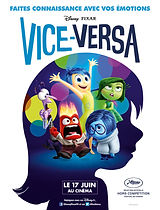
Why this reference?
Theme of emotions
evolution from childhood to adolescence

Why this reference?
Short format
Simple situations
Crazy situations
Film references
Inside Out
Martin Matin
Références Jeux Vidéo

_ Brise le 4e mur
_ Scènes loufoques
_ Interactions avec les ennemis
_ Humour

_ Calme, léger, intime
_ Personnage attachant
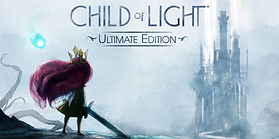
_ Thème et structure du conte pour enfant
_ Mélodie des mots (vers et rimes)
_ Dialogue évolutif en fonction des actions du joueur.
_ Humour
Literary style and techniques
Once the genre of book was well analysed, a pre-production phase centered on the development of the writing style was necessary. Following the gender analysis, several techniques seem more suitable, the objective is to create our own style based on what already exists and has proven its effectiveness in the world of children's stories.
Free verses:
Taking into account references such as Child of Light and Les Fables de la Fontaines, the narration is composed of dialogues written in free verse.
The interest is to create a melody in the structure of the text, to give a harmonious aspect that follows the musical intention of the project. The text, in addition to being interesting in substance, must be pleasant to read in form, it is also according to this desire that we try to stay as much as possible in the dynamic sequence of short lines.
"Charlie : Qu'est-ce que cette histoire ?
_ Qui dois-je croire ?
Emilie : Grenouille, regarde bien, sois rigoureuse !
_ Quelle émotion rend Charlie soucieuse ?"
Theatricality:
As the play is mainly textual, a theatrical style has been adopted. This style aims to make this sequence of dialogue more alive and to give more personality to the characters.
To do this, each character will have his own way of speaking, more or less supported, the game having families for part of the player's target, this language has an educational interest ( interesting for families living this experience together).
Each character also has a tic of language which is more or less present depending on the mood of the latter. This tic can play on the structure of the text and break the rhyme (especially under the nervousness of a character).

.
Language tic:
Chick when angry and break the rhyme.

.
Language tic:
Zozote and speaks more familiarly.
.
Language tic:
Bipolarity of language, howls then stutters, quickly changes emotion.
.
Language tic:
Purrs when subjected to strong emotions.
Tales, the basis for creating the game narration
Game dialogs
Evolutionary dialogues:
The first big difficulty in writing the dialogues was to create a series of pieces of story that were coherent between them according to the emotion chosen by the player. A lot of test dialogues were created, a lot of iterations were done to finally come up with a satisfactory version of the story.
Main issues:
_ Colossal production of dialogues.
_ 1500 lines of dialogue for the final chapter version.
_ Thousands of testing lines were discarded.
_ Production of the game dependent exclusively on the production of dialogues.
_ Alone on the narrative production, responsibility for the success of the project on the shoulders of one person.
_ Game only on french version.
.

.
.
Respect of the project's intentions
Accessibility:
In the references analysis, humor proved to be an important asset in making the story accessible. She creates a childish and light appearance while delivering a darker and more mature underlying story.
Topics such as death, adoption, tolerance are therefore approached in the form of a bear separated from his mouse friend because of social rivalry, of a cat adopted by a wolf, of a bird that is not accepted by his family. ... We break the 4th wall, we create seemingly wacky conflicts ... Everything seems light and humorous in appearance.
[Bear] -qsiuhfkjshfpçzswhf
[Wolf] -Zzz ... Zzz ... Zzz ...
[Mouse] -What's going on, everybody's gone crazy?
[Bird] -It's nothing, it's the author who fell asleep on his keyboard! it happens all the time, he still spent his night working!
[Bear] - Make peace with your past!
[Wolf] -J ... I can't make up my mind ...
[Mouse] - (that's it, they start again as if nothing had happened!)


[Bird] -But I'm suspicious of you! You are the big bad wolf!
[Wolf] - That story again !? I'm sick of this reputation!
Yesterday I was blind, I'm not a danger, why is everyone afraid of me !?
[Bird] -It was the cat who told us, would he have lied to us again?
[Wolf] -Is he the one spreading all these rumors?
[Bird] - everyone thinks you are a bloodthirsty monster!
But you did not see anything, it cannot be you, it cannot be done!
[Mouse]-Tom le Taupticien !? Moi qui croyais que les taupes n’y voyaient rien... [Cat]-C’est bien pour ça qu’elles sont douées en verres ![Bird]-Tant de manière, moi aussi je suis douée en vers ! [Bear]-Qui parle de boire un verre ? [Bird]-Veillez à votre parlé ! ça ne se boit pas, les vers sont bons à manger ! [Mouse]-Les amis, vous divaguez ! Laissez le chat parler ! [Cat]-Laissez, ce n'est rien, vous me faites rigoler !
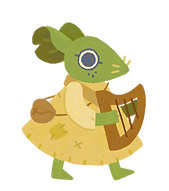
Endearing characters:
Each character has his own story, his past and his reason for following Grenouille on his adventure. The goal is to make them unique and endearing.

Mr Ernest

Scapin

Grenouille

Mr Gevaudan
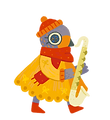
Charlie

Emilie